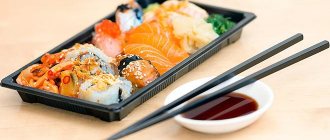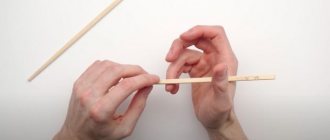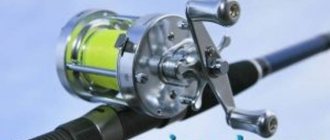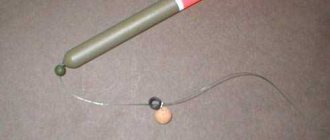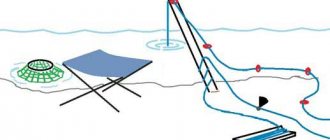Author:
Galina
12:09 | 29.09.2020
Heading:
Cuisine of the world
700
400
How many people in the world use chopsticks? There are three main ways of eating. There are more than 5 billion people living in the world. The way people eat can be divided into three types:
- eating food with your hands. About 40% of the world's population uses the “manual” method of nutrition. Residents of Southeast Asia, the Middle East and Africa eat with their hands, without using any cutlery. In Hinduism and Islam, food is sacred, given by God, dishes and cutlery (chops and forks) are “dirty” and are not used when eating food.
- 30% of the population eats with chopsticks. Countries such as China, Korea, Japan, Taiwan, Vietnam, etc. use chopsticks.
- And 30% of the population uses the cutlery we are used to: fork, spoon, knife. This method is used in Europe, America, Russia, etc.
What are chopsticks called?
For more than three thousand years, East Asians have used chopsticks as cutlery. They are called differently in different countries. So in China - kuaizi, in Korea - chokkarak, in Vietnam - Dua, in Mongolia - sabaha, and in Japan - hasi.
In the beginning, chopsticks were made from wood or bamboo. Currently, the choice of material is huge. In addition to wooden sticks, you can find plastic, metal, bone, silver and even precious metal ones.
As a rule, chopsticks are a disposable device, but at home, every Japanese has their own set of hashi, which they treat with care and respect.
Perhaps the method of eating with chopsticks gave rise to an enthusiastic and respectful attitude towards food among the Japanese. When you collect every grain of rice from the bowl, you have time to enjoy the taste and beauty of the prepared dish. By the way, Japan is the only country that uses chopsticks for both solid and liquid food.
Since 1975, Japan has celebrated Chopsticks Day on August 4, founded by the Waribashi Association. It's a day to think about chopsticks, including how to use them correctly, give thanks, and reconsider your food culture.
When you see how deftly the Japanese and Chinese eat with chopsticks, it seems that it is very simple. If you think that children master the technique of eating with chopsticks from birth, then this is not at all true. If parents give babies a spoon and fork(!) already in the first year of life, then the optimal age to teach a child to eat with chopsticks is from three to five years. You need to learn the technique correctly right away, as it stays with you for life. The indicated age is an approximate boundary and the impetus for a child’s education can be his interest in how and what his parents eat.
Japanese researcher Hachiro Isshiki conducted a study on how early use of chopsticks affects children's development. And I came to the conclusion that children who have mastered the technique of using chopsticks at the age of one year develop better than their peers.
It takes a lot of time and effort for a young child to learn how to use chopsticks correctly. After all, in fact, each finger in this process lives its own life and performs its own movements. Despite the fact that Japanese cuisine has firmly entered our lives, Europeans can probably be compared with children in the matter of mastering the technique of eating with chopsticks.
Varieties and interesting facts
Sushi sticks are divided into five main types:
- Universal hashi. They are mainly made of wood - cryptomeria, pointed at the ends.
- Devices made of cedar are sharpened on both sides.
- Waribashi are disposable, made from plastic or bamboo and served to guests in Asian cafes or Oriental restaurants. Waribashi should be joined at the ends as a sign that they have not been used.
- Gong Fai are special hashi for transferring food from a common vessel into separate plates without breaking it.
- Chopsticks for cooking. Their standard length is about 30 centimeters.
In Asian culture, great importance is given to the number of rules for using hashi. For example, Japanese chopsticks clenched in a fist are considered an indicator of hostility and an aggressive attitude. You should not lick or pierce them, break food, you should not pass food with your own cutlery to your neighbor at the table, or wave them or point at something. You should always take food from the plate from the top and eat exactly the piece you touched. It is considered unacceptable for Asians to choose the best cut.
Nutritionists advise those people who are overweight to start using chopsticks for eating. According to their research, the use of Asian appliances leads to faster saturation, which means the number of calories consumed is significantly reduced.
After finishing dinner, under no circumstances should you place your chopsticks across the plate. They should be placed in a special stand, and if there is not one on the table, then the hashi should be placed on the table or on the edge of the dish. By the way, in the homeland of rolls, men can eat food both with chopsticks and with their hands.
For women, this rule is not valid, regardless of the size, shape and consistency of the food, they can only use hashi.
How to choose chopsticks (hashi)
At the learning stage, they use training sticks, which have special devices that simplify the process of using them, but you need to stop in time and switch to regular ones. When purchasing chopsticks (hashi), you must:
- choose the optimal length, which is obtained from the distance between the thumb and index finger, set at an angle of 90º, multiplied by one and a half. Chopsticks are changed as the hand grows. Accordingly, the length for men, women and children will be different. There are also other comparative guidelines, for example, for a child, the length of the sticks is selected at the level of the length of the mother’s foot (a strange option) or 15% of the mother’s height - theoretically it is not difficult to calculate.
- Optimal material is essential. Sticks must be safe and therefore they are made from such types of wood as: hinoki (cypress obtuse leaf), bamboo. There are also a large number of cute plastic chopsticks for children, but it is better to use natural material. In addition, it is more difficult to eat with plastic chopsticks, as they are slippery.
Using training sticks
Even the ancient sages pointed out that any person who has no idea about Japanese cuisine can master the art of using chopsticks correctly in 2 hours. By studying the theoretical principles and the classic algorithm of actions, you can easily learn to eat sushi and much more with the help of hashi.
Most restaurants and sushi bars have educational copies. This is done so that a person feels relaxed, without thinking about how to hold sushi chopsticks and how to deftly eat with them at the table. Such devices are given not only to beginners, but also to children who find it difficult to hold adult devices. The kit includes not only a pair of sticks, but also a special plastic holder. The sequence of actions is as follows:
- Separate the set so that you get two separate sticks.
- Insert them into the holes of the holder, while you need to fasten the products as close to the base as possible to make it more convenient.
- The resulting structure must be used like tweezers, that is, push it apart, pick up food, push it in.
- Hold the food by bending your fingers and direct it into your mouth. The middle finger is responsible for this process.
It is worth understanding that only in theory the algorithm of actions seems complex and ornate, in practice everything is simpler. But before going to a restaurant, just in case, you can practice at home with a training copy to avoid embarrassment in a public place.
How to hold chopsticks
For beginners, using chopsticks is not a very easy task, I was never able to overcome the barrier and, whenever possible, I use a fork and spoon, fortunately, in all establishments and hotels in Japan, when they see a foreigner, they immediately offer cutlery, with the exception of the case at the Omi-cho market. So, you need to remember the following steps:
Images taken from https://matcha-jp.com/cn/876
The correct way to hold chopsticks.
- Place your thumb on the top one-third of one chopstick and grasp it with your index and middle fingers, just like you would a pencil. You can press the stick a little with your thumb.
- Place the bottom stick opposite your ring finger .
The second stick should point in the same direction as the first, place the stick between your thumb and forefinger.
- Use your thumb as a fulcrum. The upper chopstick is fixed with the index and middle fingers, and the lower chopstick with the base of the thumb and ring finger. Secure the bottom stick so that it does not move, and only move the top of the stick to clamp them.
It's better to see once and then practice.
How to eat with chopsticks the classic way
Relax your hand. Place one stick on the nail phalanx of the ring finger and press with the base of the thumb.
Frame: LeesRandomVids/YouTube
Place the second stick in your hand as you would normally hold a pencil. Straighten your thumb and move it to find the most comfortable position. All people hold chopsticks slightly differently.
Frame: LeesRandomVids/YouTube
Try moving the second stick. To lower it, press slightly with your index finger. To pick it up, push it up with your middle finger. The thumb and first stick remain motionless.
Frame: LeesRandomVids/YouTube
This video will help you master this technique of eating with chopsticks:
How to use chopsticks and what absolutely should not be done
Often, Europeans, not knowing the rules for using chopsticks, can shock the ceremonial Japanese and offend their feelings. Of course, most likely, they will not show their true feelings outwardly. However, when we see that a person does not behave in accordance with accepted rules, we experience a certain negativity.
For the Japanese, every movement, word, and deed matters. Therefore, it is better to know the rules in advance.
- You cannot pierce food with chopsticks. It looks unsightly, and the product may jump out of the plate.
- If you need to move the plate closer, do it with your hands, not with chopsticks. (To be honest, I wouldn’t have thought of dragging the plate across the table with chopsticks).
- You should not place chopsticks crosswise on a plate while eating, as this means that the food was not tasty. While eating, it is acceptable to place the tip of the chopsticks (the thinner one) on the chopstick holder. In Japan, it is considered best practice to place your chopsticks on a chopstick holder rather than on a plate or table. Chopstick rests are usually available at home or in an upscale restaurant. However, chopstick holders are often not available in cafes and small restaurants. In this case, it is permissible to place the tip of the chopsticks on the plate. Or make an improvised holder for chopsticks from scrap material - from the paper bag in which they are served. I'll have to remember my origami lessons.
- You can't lick chopsticks.
- You cannot pass food with chopsticks to another person. If you want to treat, the selected piece should be placed on the edge of the plate and offered to take it yourself.
- You can’t “dig” through the plate in search of the best piece. To do this, you need to decide in advance which piece to take.
- When eating, chopsticks should not be turned towards other people.
- You cannot stack sticks crosswise.
It is important
Have you figured out how to use sushi chopsticks correctly? This is very good, but don’t rush to show yourself in action. There are some rules of etiquette that you MUST follow!!! Here are the main ones:
food can be taken, put into a portioned plate from a common dish, but it is strictly forbidden to prick it, or use it for stirring in search of a more appetizing piece;- You can’t stick your chopsticks into your plate, even if it’s your portion. They should just lie next to each other during a meal break;
- It is categorically unacceptable to knock on the plate with chopsticks;
- Those who lick chopsticks or use them while pointing at someone look very stupid;
- do not hold the chopsticks vertically in your hands or clasp them in your fist, this is considered one of the symbols of threat.
And most importantly, when you decide to learn how to hold chopsticks correctly, remember that they are an integral part of the traditions of entire nations, so treat them with respect.
And finally, some interesting facts:
- a child is given chopsticks on the 100th day of his birth, and he begins to eat with them at one year of age;
- every self-respecting Japanese has his own personal chopsticks and even comes to visit with them;
- Using sticks develops fine motor skills, and this has a very positive effect on mental development.
Now you can safely go to a restaurant, but if you have a date, don’t forget to take care of the little things, for example, plucking your eyebrows.
Chinese chopsticks
The birthplace of chopsticks is China and the first mention of them as cutlery dates back to the Han Dynasty (202 BC - 220 AD).
Chinese chopsticks are longer than those in other Asian countries and are approximately 25-27 cm, they are wider and heavier. The base is usually square, but there are also round ones. Plastic chopsticks have a blunt tip, while bamboo and wood chopsticks have a pointed tip.
In China, it is customary to serve side dishes on a large communal plate rather than individually. So long chopsticks make sense.
In China, unlike Japan, children immediately begin to use chopsticks of standard length.
Preparation for use
Before answering the question of how to properly use sushi chopsticks according to the rules of etiquette, you should dwell on the preparation process and the general characteristics of the device. The entire variety of these products can be divided into two groups:
- Disposable chopsticks - used when serving food in Asian restaurants and food delivery services. They are most often made of wood or plastic, packaged in individual paper wrapping and used once. In this case, re-processing is not provided. Use of the device requires further disposal.
- Reusable - made of metal, bone, or maybe wood, plastic, but of higher quality than disposable ones. The most common materials are cypress, maple, sandalwood or silver. In most cases, the devices have a mother-of-pearl coating, which allows them to be washed many times, dried and used in the future. As a rule, the use of reusable forms is simpler and more affordable.
Reusable
Disposable
In Russia, disposable variations are most often used, so it’s worth dwelling on them in more detail. In order to understand that the device has not previously been used by another person, you need to pay attention to the packaging. This is a paper or plastic envelope made to resemble sticks, that is, narrow and long. Often the logo of a company or restaurant is indicated on it; bamboo may be depicted.
If the packaging is damaged, open, dented, has external flaws, or is missing altogether, this may indicate that the device is being reused in order to save money.
Eating with Japanese chopsticks is not so easy, but if you understand the algorithm of actions and practice well, the process will not cause any trouble. You need to start by removing the wrapper. It tears at the base perpendicular to the packaging, that is, a small edge is torn off - so that the sticks can be taken out. Then you need to carefully remove the kit. For disposable devices, two sticks are fastened at the base. For ease of eating rolls and sushi, you need to split them. To do this, the sticks are carefully pulled in different directions. Only after completing all the preparatory steps can you correctly take the device and begin the eating ceremony.
When choosing disposable chopsticks, you should pay attention to the packaging - it should not be damaged
Buy chopsticks
Aliexpress has a huge selection of chopsticks. The trading platform has long established itself as a reliable and profitable partner. Ali prices are cheaper than you can buy at retail, delivery is mostly free. In case of complications or lack of goods, the seller easily makes contact and corrects the situation. Such a large selection cannot be found in any store.
You can examine each product in detail and read customer reviews. The site presents all types of chopsticks made of various materials: Chinese, Japanese, Korean.
Interesting sets:
Reusable handmade bamboo chopsticks, natural wood
Chinese stainless steel chopsticks
ceramic chopsticks
general chopsticks sales page
General recommendations that will help you effectively learn to eat with Chinese chopsticks: tips
The general scheme is clear. We also advise you to listen to the following recommendations on how to properly eat with chopsticks:
- First you need to practice with pieces of different types and sizes. Only after they begin to yield can you get acquainted with noodles - they are the most difficult to master, so it is better to postpone them for later.
- Patience and patience again is perhaps the main commandment. There is no need to get upset or angry after the first fallen piece. Excessive nervousness will lead to nothing.
- It is believed that holding this cutlery exactly in the middle is the most uncomfortable for beginners. It is better for them to grip the sticks closer to the wide or narrow ends. The middle is the next stage of mastery.
- In this case, the most convenient option is to grab the sticks at the wide ends. This way you can grab even large pieces. And you can also practice with the grip angle, choosing the most convenient one.
IMPORTANT: Many novice fans of Asian cuisine think that grabbing the chopsticks at the narrow ends is the most convenient. But, as practice shows, such a view is wrong.
It is best to grab Chinese chopsticks close to the wide ends
- In order to make scooping movements , you need to open the sticks so that they are parallel to each other. This can be useful, for example, when working with rice. By the way, the correct way to scoop rice is from bottom to top.
- It is better to start your workout with slices or flexible food. For example, you can practice on pieces of cheese. Cube food is the next step.
- Beginners should ask for bamboo or wooden cutlery. It's all about their texture - wood holds food perfectly. Plastic ones are offered more often, but they are a little more difficult to use. And finally, the most troublesome option is metal sticks. Asians love them, but in this case they are not suitable.
- The next tip for choosing chopsticks: the thinner they are, the more difficult it is to get used to using them. Therefore, if possible, it is definitely worth asking for thicker chopsticks.
IMPORTANT: It is recommended to rub your hands before each workout - this is a great way to prepare small muscles. After all, it is possible that after the first tests your fingers will ache.
What is the difference between chopsticks in China, Japan and Korea?
Comparative analysis can be carried out using many indicators. Let's look at some of them:
- According to the material of manufacture:
- Japan - chopsticks are made of wood and plastic.
- China - mainly made of wood, bamboo and ivory.
- Korea - usually made of stainless steel and silver of the highest quality.
- By form:
- Japan - medium-length chopsticks with sharp tips, these chopsticks are easy to eat fish with.
- China - long sticks with rounded tips.
- Korea - medium length, flat, thin, with a cross section.
- By gender:
- Japan - Women's and men's items differ in length. Women's chopsticks are shorter. At the same time, for children, the sticks are replaced as they grow.
- China - there are no differences between men's and women's chopsticks. Children immediately use standard length sticks.
- Korea - no difference. Children use chopsticks just like adults.
- By individualization:
- Japan - in household use, chopsticks are individual.
- China - there are no differences, all family members use it.
- Korea - there are no differences, all family members use it.
- By use:
- Japan - they eat not only solid food, but also liquid food with chopsticks. So, to drink soup, you should bring the bowl to your mouth and drink, using chopsticks to help remove the remaining contents. They eat sashimi, sushi, tempura, noodles, and soup with chopsticks.
- China - rice and soup are eaten with a spoon. Chopsticks are used to eat noodles, fried dumplings, and fried foods.
- Korea - liquid food is eaten with a spoon, just like rice. Kimchi, namuru, fried foods and vegetables are eaten with chopsticks.
Share in the comments how easy it is for you to use chopsticks or do you prefer to eat with a fork, even if it’s sushi and rolls?
Types of sticks
Chopsticks come in several varieties. They differ in purpose, length and other characteristics. Main types:
- Waribashi are disposable chopsticks fastened at the ends, which are served in most restaurants and cafes with Japanese, Chinese, and Korean dishes. Made from wood, plastic and bamboo, sold in sealed paper packages.
- Nuribashi are reusable devices. Most often they are made of cedar and have pointed ends.
- Standard hashi are universal, made from different materials, most often wood. Among the Japanese, they are considered a personal item on a par with a toothbrush and comb.
- Khasi for cooking vary in length (up to 30 cm), and are used for mixing dishes. Not considered a personal item.
- Gong Fai - designed for transferring food from a common plate to your own. They look like standard hashi ones.
Expert opinion
Soloviev Pavel Viktorovich
Designer with many years of experience and experience.
In Japan, there are separate types of sticks for sweets, meat and fish dishes, tea ceremonies, and holidays. But the differences between them are insignificant and are more aesthetic than practical.
Selection rules
When choosing Khasi, you should pay attention to the material. Popular options:
- Tree . Sticks made from it are comfortable, light in weight, inexpensive, and come in different shapes and sizes.
- Metal. In the production of hashi, silver is most often used (in ancient times it was used to test food for poisons) and simple alloys: products made from them are more expensive than wood, but are more durable and durable.
- Plastic. It produces practical, cheap chopsticks, which are most often served in cafes and restaurants, but they cannot be used for eating hot dishes.
- Exotic materials - ivory, jade, marble, etc. Khasi ones are expensive, have an elaborate design, and are more often used for interior decoration in kitchens and restaurants than for their intended purpose.
Wooden sticks should be smooth, polished, without splinters or burrs.
Metal hashi are distinguished by their increased thinness and are used mainly by residents of Korea.
In addition to the material, their shape is taken into account when choosing. Beginners should choose cutlery that is square in cross-section: it is easier to pick up slippery food and your hands get less tired. People who are not used to them often get sore fingers and calluses from round hashi, especially with regular use.
Sticks with thin ends are convenient. They make it easier to pick up food and bring it to the mouth, since the thicker edge maintains balance, compensating for the weight of the food with its weight.
When choosing reusable hashi, you should also pay attention to aesthetic qualities. Cutlery with painted, carved, and varnished handles will not only help you get acquainted with Asian dishes, but will also become a decoration for your kitchen.
Features of training sticks
The training sticks are fastened to each other at the ends with a movable elastic band or a special fastener made of elastic material. Some of them have a clothespin design. This feature helps to lift food using hashi as tongs or tweezers with which to clamp a piece of food.
Using training devices makes it easier to adapt your hand to them, get used to the correct movements, without fear of dropping food.
